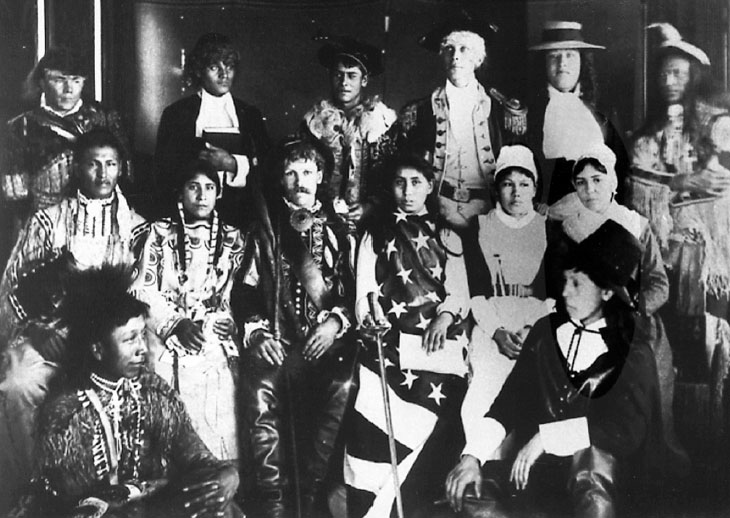Indian Schools and the War on Indian Culture.
Printed Page 458 Chapter Chronology
Indian Schools and the War on Indian Culture. Indian schools constituted the cultural battleground of the Indian wars in the West, their avowed purpose being "to destroy the Indian ...and save the man." In 1877, Congress appropriated funds for Indian education, reasoning that it was less expensive to educate Indians than to kill them. Virginia's Hampton Institute, created in 1868 to school newly freed slaves, accepted its first Indian students in 1878. Although many Indian schools operated on the reservations, authorities much preferred boarding facilities that isolated students from the "contamination" of tribal values.
Many Native American parents resisted sending their children away. When all else failed, the military kidnapped the children and sent them off to school. An agent at the Mescalero Apache Agency in Arizona Territory reported in 1886 that "it became necessary to visit the camps unexpectedly with a detachment of police, and seize such children as were proper and take them away to school, willing or unwilling." The parents put up a struggle. "Some hurried their children off to the mountains or hid them away in camp, and the police had to chase and capture them like so many wild rabbits," the agent observed. "This unusual proceeding created quite an outcry. The men were sullen and muttering, the women loud in their lamentations and the children almost out of their wits with fright."

Once at school, the children were stripped and scrubbed, their clothing and belongings confiscated, and their hair hacked off and doused with kerosene to kill lice. Issued stiff new uniforms, shoes, and what one boy recalled as the "torture" of woolen long underwear, the children often lost not only their possessions but also their names: Hehakaavita (Yellow Elk) became Thomas Goodwood; Polingaysi Qoyawayma became Elizabeth White.
The Carlisle Indian School in Pennsylvania, founded in 1879, became the model for later institutions. To encourage assimilation, Carlisle pioneered the "outing system" — sending students to live with white families during summer vacations. The policy reflected the school's slogan: "To civilize the Indian, get him into civilization. To keep him civilized, let him stay."
Carlisle Indian School
Institution established in Pennsylvania in 1879 to educate and assimilate American Indians. It pioneered the "outing system," in which Indian students were sent to live with white families in order to accelerate acculturation.
Merrill Gates, a member of the Board of Indian Commissioners, summed up the goal of Indian education: "To get the Indian out of the blanket and into trousers, — and trousers with a pocket in them, and with a pocket that aches to be filled with dollars!" Gates's faith in the "civilizing" power of the dollar reflected the unabashed materialism of the age.